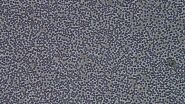Flocks of starlings ride the wave to escape
Researchers study agitation waves that form when flocks of birds dodge predators
2015-03-26
(Press-News.org) Why does it seem as if a dark band ripples through a flock of European starlings that are steering clear of a falcon or a hawk? It all lies in the birds' ability to quickly and repeatedly dip to one side to avoid being attacked. For a split second, these zigs change the view that observers on the ground have of the birds' wings to cause a so-called agitation wave. This evasive strategy is copied as quick as a flash from one neighboring bird to the next. The escape behavior underlying this was discovered in a study led by Charlotte Hemelrijk of the Centre for Ecology and Evolutionary Studies in the Netherlands and portrayed in a series of video clips. The findings are published in Springer's journal Behavioral Ecology and Sociobiology.
Agitation or shimmering waves form when individuals in a flock of birds, swarm of insects or school of fish quickly repeat the fear reaction or escape maneuver of a close neighbor. They can be seen as spirals, concentric rings or moving lines. In giant honeybees, this happens when each insect lifts its abdomen, while in anchovies, individuals temporarily move closer together or roll sideways.
In starling flocks, a dark band moves continuously in a line from one end of a flock to the other, away from the predator. It generally happens at a speed of 13.4 meters per second, and moves faster than the flock itself. What maneuvers underlie the moving band are unknown, because the wave happens high above the ground and cannot be observed in detail. Therefore Hemelrijk's team turned to a computational model called Star Display. It models flocks that resemble groups of starlings flying together.
It showed that agitation waves among starlings are caused by changes in the orientation of the birds and not due to variations in density in the flock. The waves occur when individuals try to escape by moving sequentially closer together and further apart. A single band is obtained when the individual birds roll sideways and back again, thus performing half a zigzag or a zig. When repeated by others further down the flock, this zig movement generates a moving single band known as an agitation wave. These agitation waves are shown in a series of video clips accompanying the study.
"On the ground, someone watching will, for a split second, see the largest wing area once a bird has rolled 90 degrees sideways," Hemelrijk explains. "This temporary increase of dark surface of the wing causes us to see a black band continuously moving away from the predator when the birds repeat each others' zig maneuver."
The researchers also found that repeating the escape behavior from only two to seven neighbors close by is enough to generate an agitation wave. The wave speed increases along with the number of neighbors from whom the movement is mimicked and the distance between them. It also depends on the reaction time of individual birds.
INFORMATION:
Reference: Hemelrijk, C.K. et al (2015). What underlies waves of agitation in starling flocks, Behavioral Ecology and Sociobiology. DOI 10.1007/s00265-015-1891-3
[Attachments] See images for this press release:

ELSE PRESS RELEASES FROM THIS DATE:
2015-03-26
Rockville, Md. (March 26, 2015) -- The motion of coins in a "Penny Pusher" carnival game is similar to the movement of cells in the eye's lens, as described in a new study published in Investigative Ophthalmology & Visual Science (IOVS). This new insight may help scientists understand how the eye maintains its precise shape -- critical for clear vision -- and how cataracts develop.
"If the size, shape or position of the eye is not carefully regulated, we simply will not see clearly," said author Steven Bassnett, PhD, of Washington University School of Medicine, Department ...
2015-03-26
Life expectancy for Hispanics in the U.S. currently outpaces other ethnic groups, yet a new study finds that Mexican Americans -- especially women who were born in Mexico -- are spending a high proportion of their later years with some form of disability, a fact that suggests a growing need for community assistance and long-term care in the future.
These findings are reported in a new article published online in The Journals of Gerontology, Series B: Psychological and Social Sciences titled "Longer Lives, Sicker Lives? Increased Longevity and Extended Disability Among ...
2015-03-26
Nobody likes getting the flu, but for some people, fluids and rest aren't enough. A small number of children who catch the influenza virus fall so ill they end up in the hospital -- perhaps needing ventilators to breathe -- even while their family and friends recover easily. New research by Rockefeller University scientists, published March 26 in Science, helps explain why: a rare genetic mutation.
The researchers scrutinized blood and tissue samples from a young girl who, at the age of two-and-a-half, developed acute respiratory distress syndrome after catching the flu, ...
2015-03-26
CAMBRIDGE, Mass., March 26, 2015 - Newly published research from the Forsyth Institute details a discovery explaining why the 100 million Americans estimated to be taking prescription and over-the-counter antacid and heartburn medications may be at an increased risk of bone fractures.
The new report from Forsyth, published in the March issue of the prestigious medical research journal PLOS Genetics, explains that stomach acid in the gastrointestinal tract plays an important role in helping the intestines absorb and transfer calcium to the skeletal system. While the ...
2015-03-26
Genetic defects affecting tiny channels in human nerve cells lead to several neurological diseases that result from aberrant nerve transmission, such as episodic ataxia, absence epilepsy, and migraines. These disorders have also been associated with neurodegeneration, but it has been less clear why this should be.
The transmission of nerve impulses requires the perfect orchestration of a series of complex cellular events in a matter of fractions of a second. The membrane that surrounds a nerve cell is normally electrically polarized, but a nerve impulse triggers a Mexican ...
2015-03-26
MADISON, Wis. -- An Ebola whole virus vaccine, constructed using a novel experimental platform, has been shown to effectively protect monkeys exposed to the often fatal virus.
The vaccine, described today (March 26, 2015) in the journal Science, was developed by a group led by Yoshihiro Kawaoka, a University of Wisconsin-Madison expert on avian influenza, Ebola and other viruses of medical importance. It differs from other Ebola vaccines because as an inactivated whole virus vaccine, it primes the host immune system with the full complement of Ebola viral proteins and ...
2015-03-26
Orchestrated costume changes make it possible for certain nasty microbes to outsmart the immune system, which would otherwise recognize them by the telltale proteins they wear. By taking the first detailed look at how one such parasite periodically assumes a new protein disguise during a long-term infection, new research at Rockefeller University challenges many assumptions about one of the best-known examples of this strategy, called antigenic variation, in the parasite that causes African sleeping sickness.
For research published on March 27 in Science, a team at Rockefeller ...
2015-03-26
A new study led by Scripps Institution of Oceanography at UC San Diego researchers has revealed that the thickness of Antarctica's floating ice shelves has recently decreased by as much as 18 percent in certain areas over nearly two decades, providing new insights on how the Antarctic ice sheet is responding to climate change.
Data from nearly two decades of satellite missions have shown that the ice volume decline is accelerating, according to a study published on March 26, 2015, in the journal Science and supported by NASA. Scripps graduate student Fernando Paolo, Scripps ...
2015-03-26
HOUSTON - (March 26, 2015) - Taking out the garbage is a crucial step in housecleaning.
Similarly, autophagy is the body's first-line of defense against the buildup up of toxic substances, degrading old organelles and proteins to provide new substrates and building blocks. In this way, autophagy prevents the buildup of "garbage" that can result in destruction of neurons and cause neurologic diseases.
A forward genetic screen in Drosophila melanogaster (fruit flies) identified mutant copies, or alleles, of a gene called cacophony associated with defects in autophagy ...
2015-03-26
While most of us recover from influenza after a week, it can be a very severe disease, and even fatal in rare cases, with no reason for physicians to have expected such an outcome. By analysing the genome of a little girl who contracted a severe form of influenza at the age of two and a half years, researchers at the Laboratory of Human Genetics of Infectious Diseases (a joint French-American international laboratory), which brings together researchers from Inserm, Paris Descartes University, and physicians from the Paris public hospitals (AP-HP; Necker Hospital for Sick ...
LAST 30 PRESS RELEASES:
[Press-News.org] Flocks of starlings ride the wave to escape
Researchers study agitation waves that form when flocks of birds dodge predators

